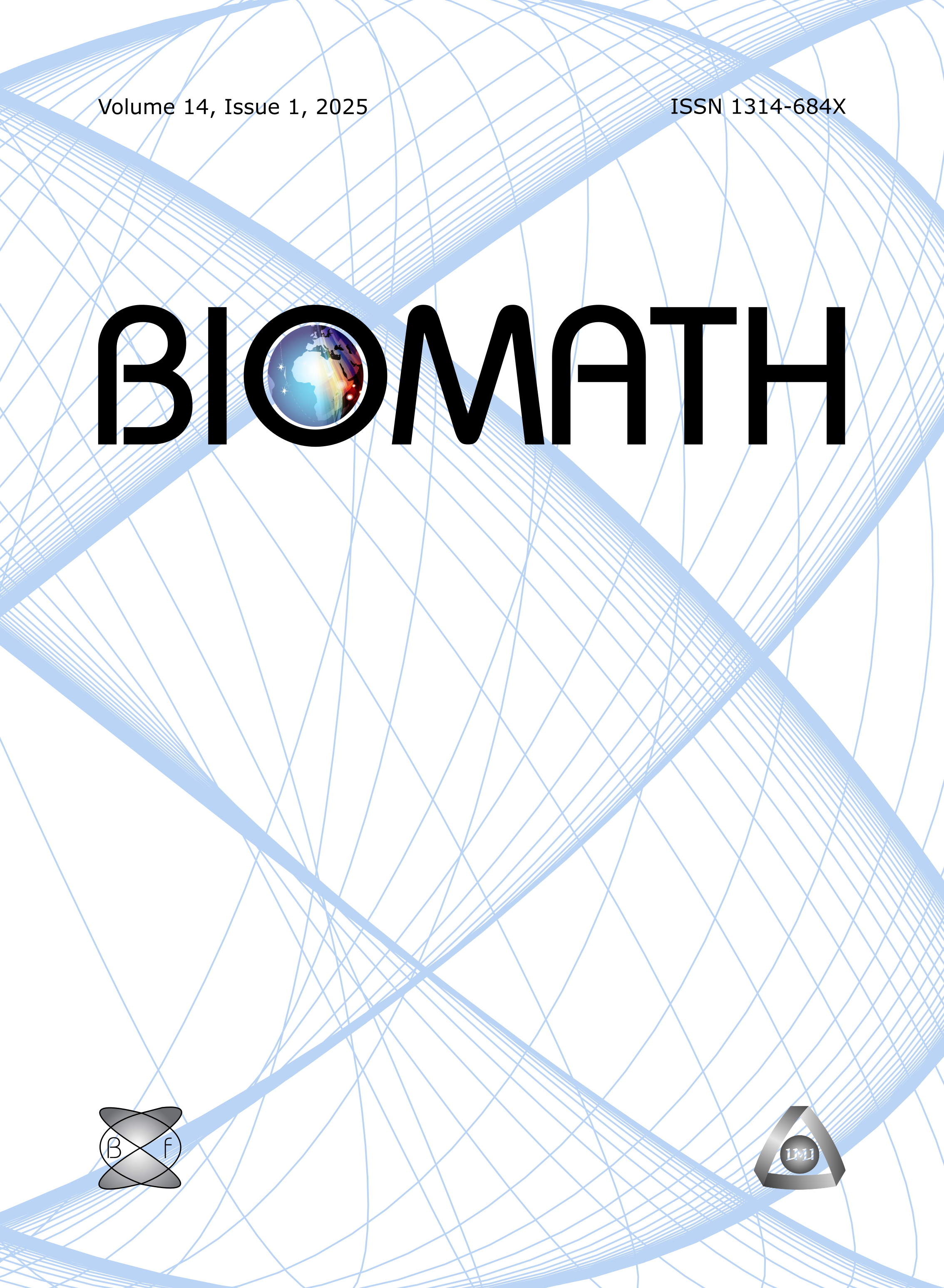A survey of adaptive cell population dynamics models of emergence of drug resistance in cancer, and open questions about evolution and cancer
DOI:
https://doi.org/10.11145/j.biomath.2019.05.147Abstract
This article is a proceeding survey (deepening a talk given by the first author at the Biomath 2019 International Conference on Mathematical Models and Methods, held in Bedlewo, Poland) of mathematical models of cancer and healthy cell population adaptive dynamics exposed to anticancer drugs, to describe how cancer cell populations evolve toward drug resistance.
Such mathematical models consist of partial differential equations (PDEs) structured in continuous phenotypes coding for the expression of drug resistance genes; they involve different functions representing targets for different drugs, cytotoxic and cytostatic, with complementary effects in limiting tumour growth. These phenotypes evolve continuously under drug exposure, and their fate governs the evolution of the cell population under treatment. Methods of optimal control are used, taking inevitable emergence of drug resistance into account, to achieve the best strategies to contain the expansion of a tumour.
This evolutionary point of view, which relies on biological observations and resulting modelling assumptions, naturally extends to questioning the very nature of cancer as evolutionary disease, seen not only at the short time scale of a human life, but also at the billion year-long time scale of Darwinian evolution, from unicellular organisms to evolved multicellular organs such as animals and man. Such questioning, not so recent, but recently revived, in cancer studies, may have consequences for understanding and treating cancer.
Some open and challenging questions may thus be (non exhaustively) listed as:
- May cancer be defined as a spatially localised loss of coherence between tissues in the sameВ multicellular organism, `spatially localised' meaning initially starting from a given organ in the body, butВ also possibly due to flaws in an individual's rms of evolution towards drug resistance governed by the phenotypes which determine landscape such as imperfect epigenetic control of differentiation genes?
- If one assumes that ''The genes of cellular cooperation that evolved with multicellularity about a billion years ago are
the same genes that malfunction in cancer.'', how can these genes be
systematically investigated, looking for zones of fragility - that depend on individuals - in the 'tinkering' evolution is made of, tracking local defaults of coherence?
- What is such coherence made of and to what extent is the immune system responsible for it (the self and differentiation within the self)?
Related to this question of self, what parallelism can be established between the developmentВ of multicellularity in different species proceeding from the same origin and the development of theВ immune system in these different species?
Downloads
Published
Issue
Section
License
The journal Biomath is an open access journal. All published articles are immeditely available online and the respective DOI link activated. All articles can be access for free and no reader registration of any sort is required. No fees are charged to authors for article submission or processing. Online publications are funded through volunteer work, donations and grants.
Authors who publish with this journal agree to the following terms:
- Authors retain copyright and grant the journal right of first publication with the work simultaneously licensed under a Creative Commons Attribution License 4.0 that allows others to share the work with an acknowledgement of the work's authorship and initial publication in this journal.
- Authors are able to enter into separate, additional contractual arrangements for the non-exclusive distribution of the journal's published version of the work (e.g., post it to an institutional repository or publish it in a book), with an acknowledgement of its initial publication in this journal.
- Authors are permitted and encouraged to post their work online (e.g., in institutional repositories or on their website) prior to and during the submission process, as it can lead to productive exchanges, as well as earlier and greater citation of published work (See The Effect of Open Access).

